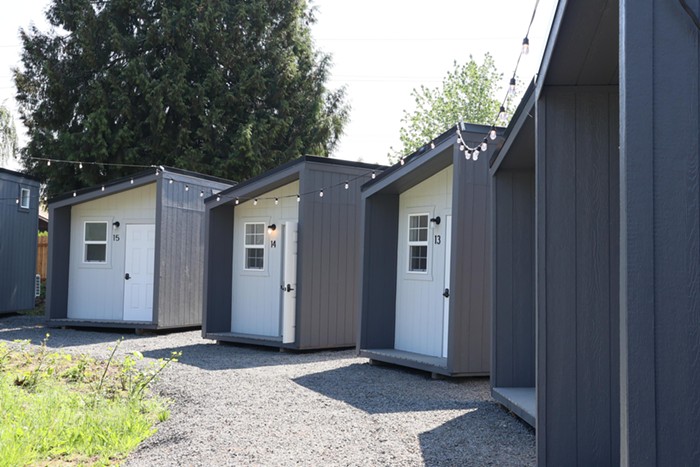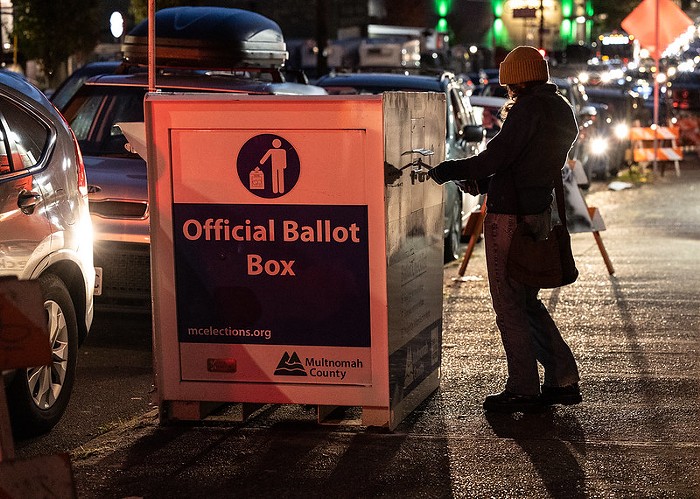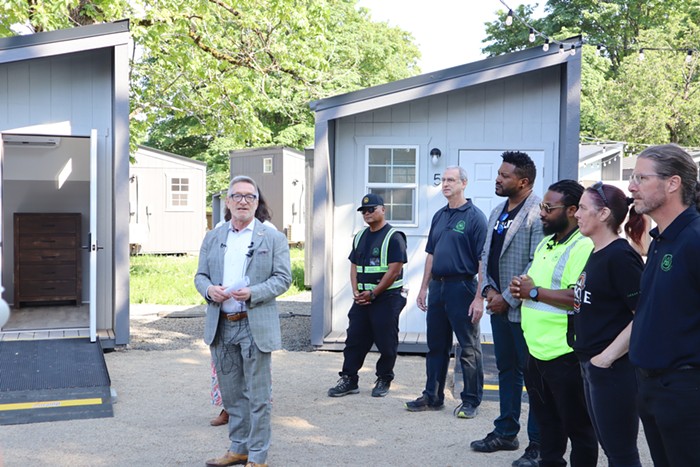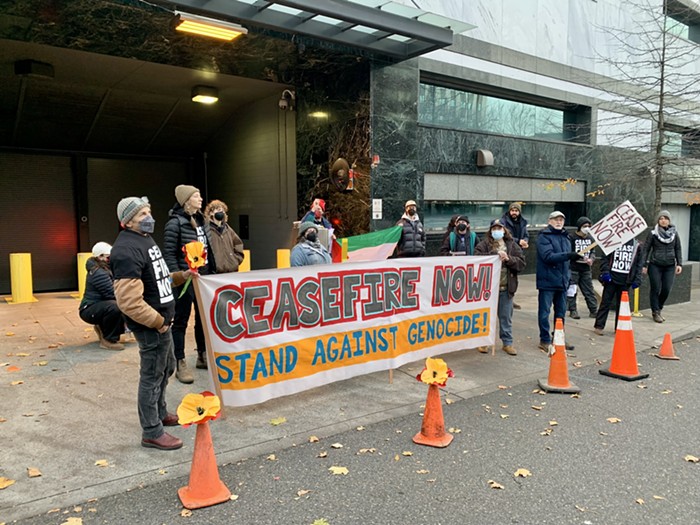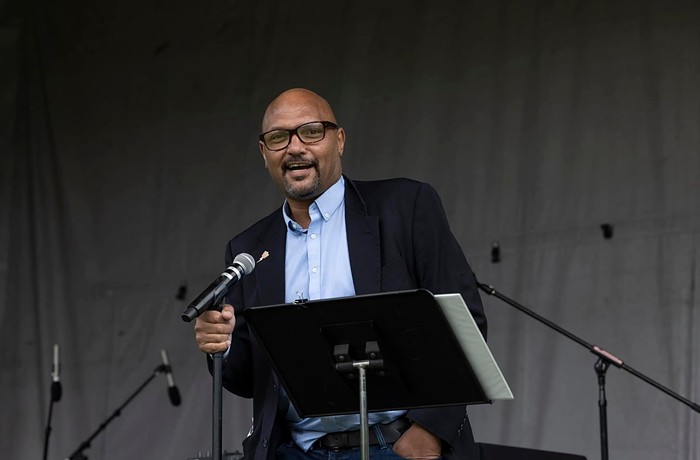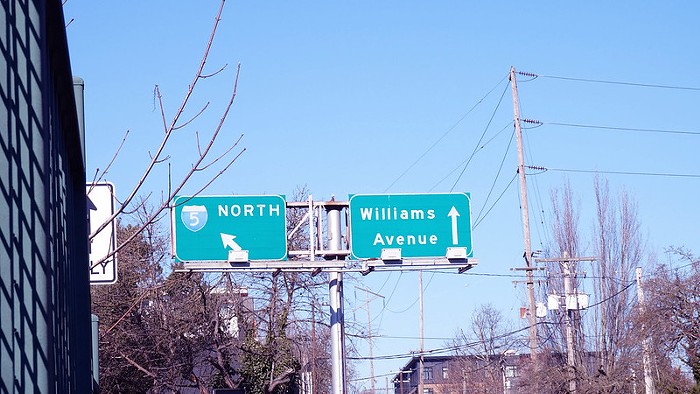Without federal support or funding for the project, momentum on the Oregon Department of Transportation’s (ODOT) plan to widen and add caps over I-5 through the Rose Quarter has stalled over the past few months. But after a series of recent wins, ODOT wants to change the narrative about the I-5 Rose Quarter project— even though the transportation department still lacks the funding mechanism to pay for the nearly $2 billion project in its entirety.
While ODOT and other community leaders are celebrating the project’s potential to transform the Rose Quarter, environmental advocates say major impacts from the project have been overlooked, and the freeway plan still lacks key funding.
On March 8, ODOT was awarded $450 million from the U.S. Department of Transportation’s (USDOT) Reconnecting Communities Pilot Program to build covers over I-5 in central Portland’s Rose Quarter area. The money is supposed to help reconnect the historically Black Lower Albina neighborhood, which was bisected by highway construction in the 1960s. Then, on March 12, ODOT announced another big milestone: After substantial back and forth, the Federal Highway Administration (FHWA) gave the transportation department the green light to go forward with the project based on an environmental review.
While the sizable grant and federal approval provide some much-needed juice for the project, which was put on ice last summer after Gov. Tina Kotek ordered ODOT to temporarily pause toll collection efforts, it still faces major— and worsening— financial challenges. In a March 11 letter to the Oregon Transportation Commission, Kotek forecasted a dim future for tolling in Oregon, ordering ODOT to put a more permanent kibosh on plans to charge drivers on state freeways.
Without tolling revenue, ODOT will be hard-pressed to pay for the Rose Quarter project. In a recent presentation to the Oregon legislature, ODOT Director Kris Strickler said the state transportation department faced around a $1.6 billion gap for funding the project— nearly its entire cost.
The $450 million federal grant makes a dent in that deficit, but ODOT had hoped for more federal funding, having initially applied for an $850 million Reconnecting Communities grant. What’s more, the grant is designated for freeway caps, not building additional lanes. Although ODOT has tied the caps to a freeway expansion, people opposed to widening I-5 say the two could— and should— be disentangled.
Albina, Reconnected
While ODOT initially promoted the I-5 Rose Quarter project as a congestion-relief plan, the agency now bills it as something much larger: An opportunity to reconnect the Lower Albina neighborhood, righting the wrongs of past transportation decisions.
When news broke that ODOT would receive nearly half a billion in federal grant funds, many people put the spotlight on Albina Vision Trust (AVT), framing the award as just the latest in a streak of wins for the nonprofit and its plan to restore the historically Black inner Northeast Portland neighborhood.
In ODOT’s announcement about the Reconnecting Communities grant, AVT Executive Director Winta Yohannes called the award a “catalytic federal investment [that] represents the beginning of a new chapter, one where government plays an active role in not only healing the harms of history, but investing in community-driven visions of a better tomorrow.”
AVT has worked closely with ODOT on the I-5 Rose Quarter project for years, with the caveat that their approval hinges on the transportation department’s willingness to add sturdy covers to the highway, robust enough to support housing and commercial development. AVT’s endorsement was also crucial for ODOT to receive support from other key project stakeholders, including the city of Portland, Metro, Multnomah County, and federal agencies.
ODOT says its current project design, now approved by the FHWA, is the “result of our work to center the voices of Black Portlanders.” It details caps over I-5 from roughly Northeast Weidler to Northeast Tillamook Streets, reconnecting the street grid north of the Rose Quarter. The project includes a car-free crossing over I-5 near the Moda Center, as well as street safety and access improvements and room for new housing, retail, and green space.
AVT’s prospect for the Lower Albina neighborhood was further boosted by a $38 million federal grant to the Portland Bureau of Transportation (PBOT) for the redesign of the North/Northeast Broadway and Weidler couplet, announced at the same time as the Reconnecting Communities grant. According to PBOT,, the plan would “redesign N/NE Broadway and Weidler Streets to connect the Albina waterfront area to jobs, services, and neighborhoods to the north and east.”
The grant awards came not long after Portland Public Schools announced it would sell its headquarters on North Dixon Street to AVT, paving the way for redevelopment of the site., With the help of $25 million from the Oregon Legislature, construction is already underway On Albina One, a 94-unit affordable housing community and the nonprofit’s first major development project, set to open in summer 2025.
Transportation and environmental advocates across Portland don’t often endorse freeway projects, but local groups are eager to see AVT’s plans coming to fruition.
Freeway expansion opponents No More Freeways, say the Albina project is a “generational investment in restorative justice that could remediate the damage done by the original construction of the freeway, and will create jobs and homes for displaced Black Portlanders.”
But they urge ODOT to “construct the caps and lose the lanes,” referring to ODOT’s design plans to widen I-5 at the Rose Quarter with auxiliary lanes and shoulders. ODOT says these lanes are necessary to help alleviate congestion, but advocates say they will induce demand for driving and create more pollution and carbon emissions in a neighborhood already blighted by the freeway.
ODOT’s financial outlook
ODOT celebrated the Reconnecting Communities grant, stating the award would allow the I-5 Rose Quarter project to go forward and enable the agency to secure additional funding from state legislators in 2025. The agency also celebrated the Federal Highway Administration’s approval of the Rose Quarter project’s environmental assessment, after receiving a “finding of no significant impact” (FONSI) further paving the way for project construction.
Freeway expansion opponents are skeptical about the story ODOT is telling. In a statement about the FONSI, No More Freeways expressed disapproval of the FHWA’s decision to greenlight the I-5 Rose Quarter project.
“It is astounding that the federal government asserts that the Rose Quarter Freeway Expansion, the largest public works project in Oregon history, will have no significant environmental impact to the community despite adding multiple additional lanes of freeway and attendant air pollution, traffic and carbon emissions to the neighborhood and the planet,” the group wrote.
No More Freeways and other environmental advocacy groups have demanded ODOT conduct a thorough Environmental Impact Statement (EIS) to consider building the freeway caps without additional road lanes. The FHWA’s recent decision makes it less likely ODOT will conduct an EIS. But without a bailout from the state legislature, ODOT’s financial situation may force the agency to abandon the freeway expansion component of the project— at least, that’s what advocates hope.
Rose Quarter project opponents say even with the $450 million grant, the project remains imperiled, especially after Kotek’s recent directive that ODOT halt their tolling program.
Above all, Oregon transportation advocates think the money for the freeway expansion could be spent on something better. ODOT’s projected price for the I-5 Rose Quarter project has risen significantly in recent years— in 2017, the agency said the entire project would cost less than half a billion dollars.
“This is at the same moment that the state legislature ponders other large budget shortfalls in our transportation system, with over $3 billion of unmet maintenance, seismic and safety needs across Oregon,” the No More Freeways statement says. “No More Freeways remains a vocal champion of remediating the Albina neighborhood with an investment in freeway caps. The opportunity to heal the injustice inflicted into this neighborhood must not be paired with ODOT’s attempt to further harm this community with greater air pollution, freeway traffic and carbon emissions.”


